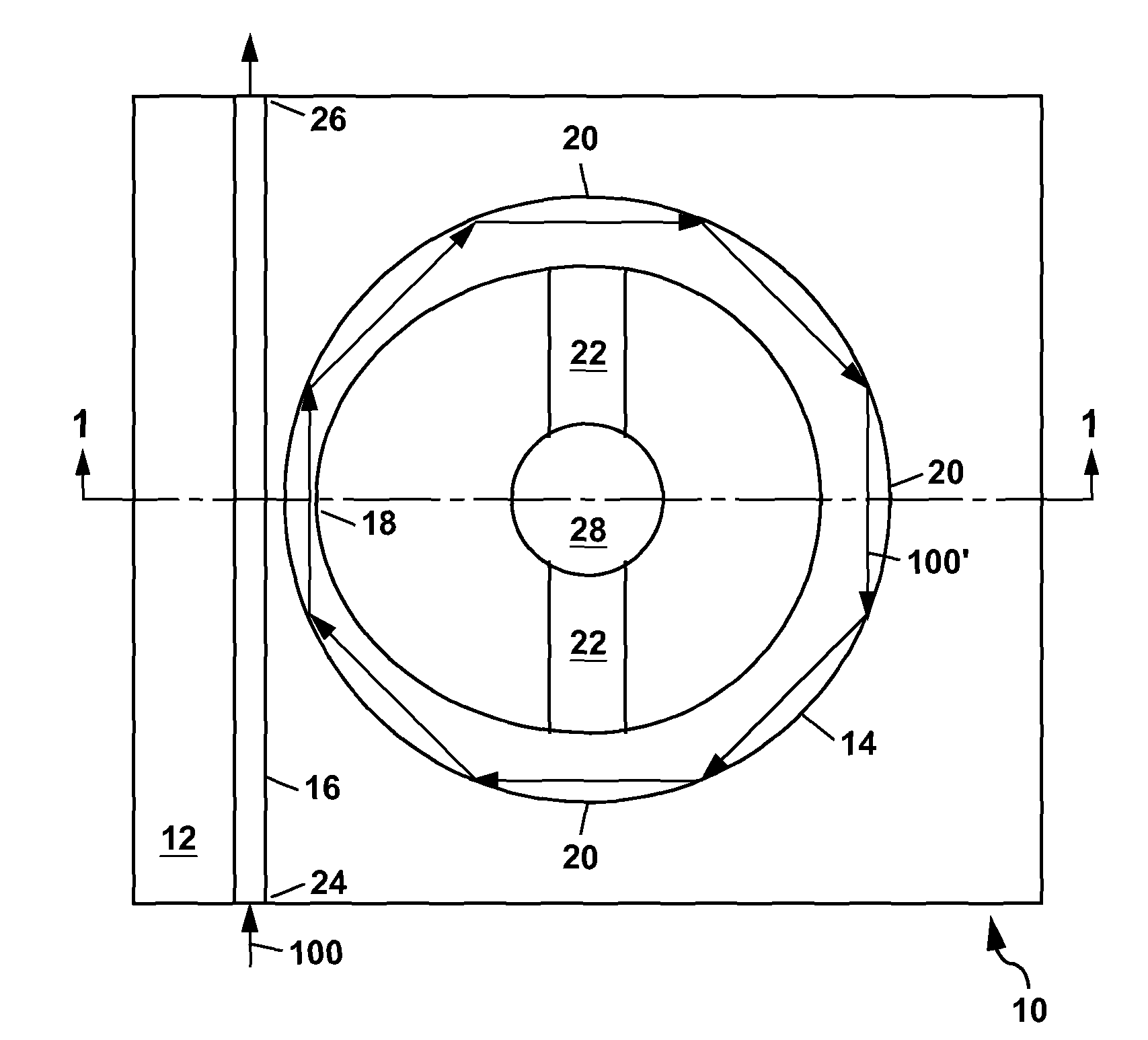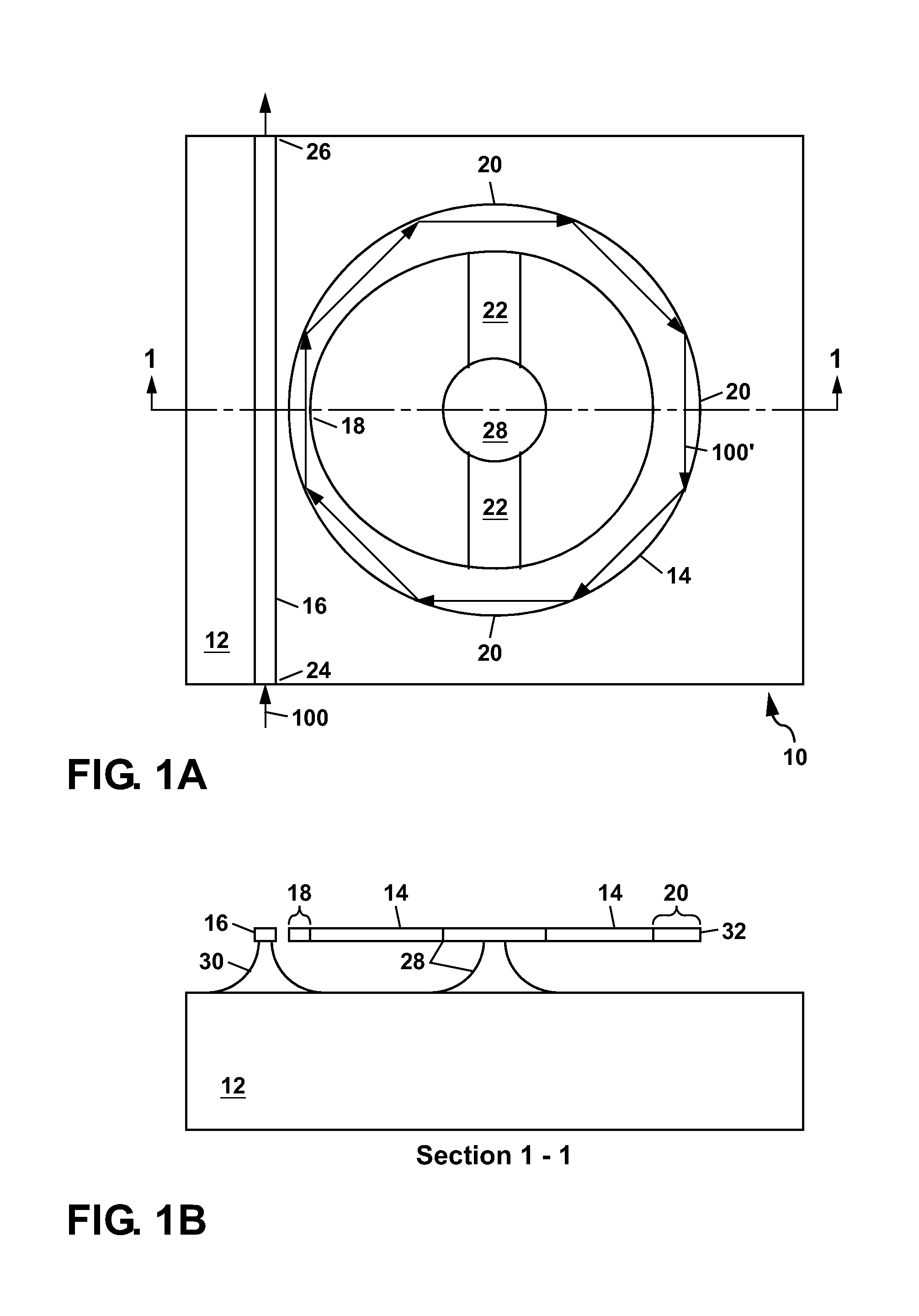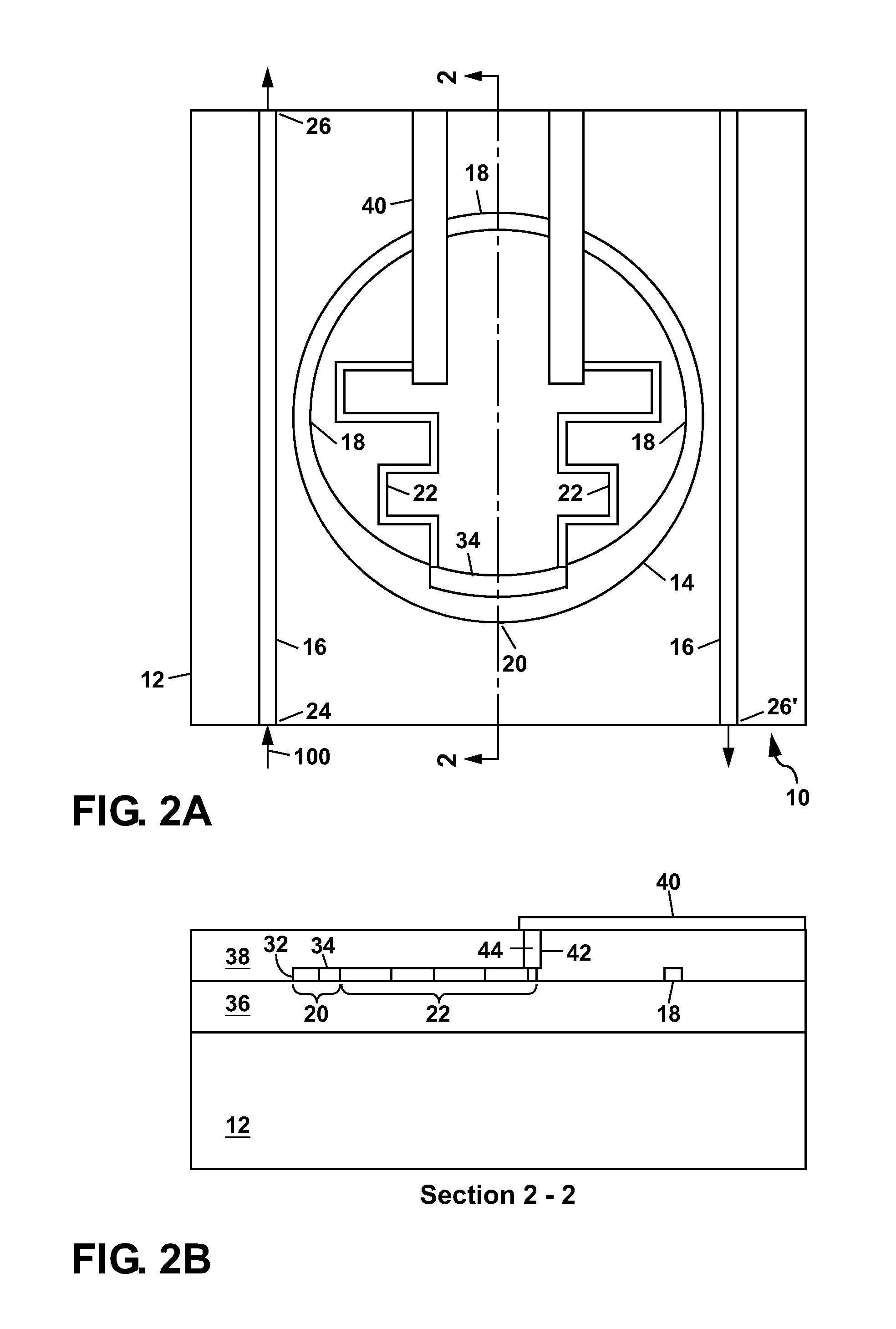Wavelength-tunable optical ring resonators
a ring resonator, wavelength-tunable technology, applied in the field of photonic integrated circuits, can solve the problems of limiting the utility of the resonator, significantly reducing the quality factor (q) of the microring resonator, and propagating light loss
- Summary
- Abstract
- Description
- Claims
- Application Information
AI Technical Summary
Benefits of technology
Problems solved by technology
Method used
Image
Examples
Embodiment Construction
[0038]Referring to FIG. 1, there is shown a first example of an optical ring resonator apparatus 10 according to the present invention. This device 10 comprises a substrate 12 on which an optical waveguide ring 14 (also referred to herein as an optical ring resonator or simply as a ring resonator) is supported. An optical waveguide 16 is also provided on the substrate 12 to evanescently couple light between the optical waveguide 16 and the optical waveguide ring 14.
[0039]The substrate 12 can comprise, for example, a monocrystalline silicon substrate, or a monocrystalline silicon body of a silicon-on-insulator (SOI) substrate. The optical waveguide ring 14 and the optical waveguide 16 can comprise, for example, silicon (i.e. monocrystalline silicon) or silicon nitride.
[0040]In the example of FIGS. 1A and 1B, the optical waveguide ring 14 has a non-uniform width which adiabatically varies between a minimum value 18 (also termed a minimum width) and a maximum value 20 (also termed a ma...
PUM
 Login to View More
Login to View More Abstract
Description
Claims
Application Information
 Login to View More
Login to View More - R&D
- Intellectual Property
- Life Sciences
- Materials
- Tech Scout
- Unparalleled Data Quality
- Higher Quality Content
- 60% Fewer Hallucinations
Browse by: Latest US Patents, China's latest patents, Technical Efficacy Thesaurus, Application Domain, Technology Topic, Popular Technical Reports.
© 2025 PatSnap. All rights reserved.Legal|Privacy policy|Modern Slavery Act Transparency Statement|Sitemap|About US| Contact US: help@patsnap.com



